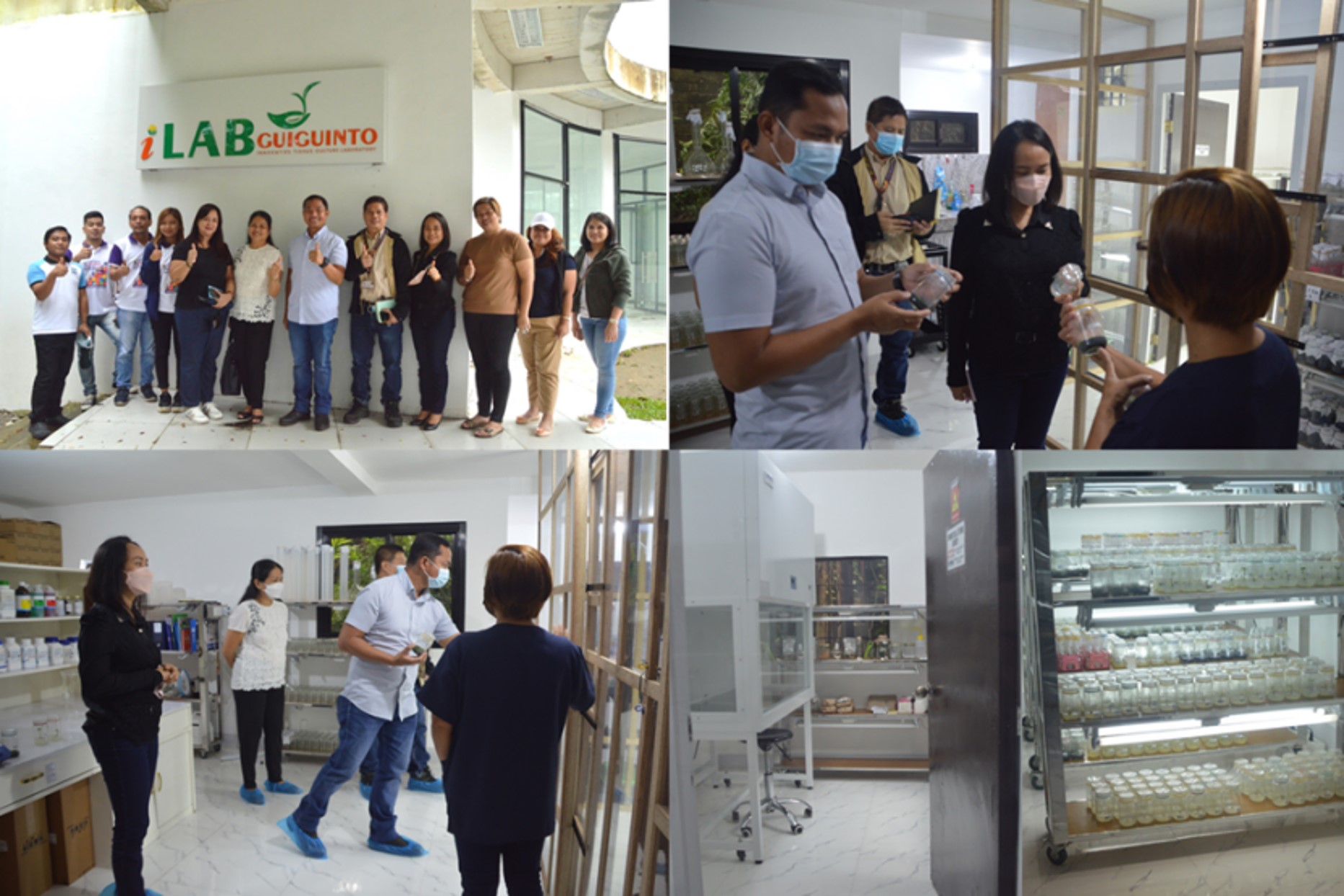
Ornamental plants, primarily grown for its beauty and aesthetic quality, are mainly used for decoration in gardens and landscape, and even indoor projects. With the ‘plantito’ and ‘plantita’ hype during the pandemic, ornamental plants received the spotlight as people became devoted to gardening for stress relief.
The rapid increase in the demand for ornamental plants has necessitated S&T interventions in production strategies, propagation intensification, and capability building of concerned stakeholders.
The project, “Enhancing the Ornamental Crops Industry in Bulacan through S&T-Based Propagation Techniques, Varietal Improvement and Capability Building” was conceptualized to reinforce the ornamental plant industry in the province by providing appropriate S&T interventions to the ornamental plant growers and the Innovative Tissue Culture Laboratory for Ornamental Plants (iLAB) in Guiguinto, Bulacan. Bulacan State University (BulSU), in collaboration with DOST Region 3, DOST-PNRI, and LGU-Guiguinto, implement the project, which is funded by the Philippine Council for Agriculture, Aquatic and Natural Resources Research and Development of the Department of Science and Technology (DOST-PCAARRD).

Aside from developing tissue culture protocols for orchids and anthurium and the improvement of conventional propagation protocols for hoya, hibiscus, and mussaenda, the project will also address the gaps in expertise and programs related to ornamental crop propagation through capability building activities. The project supports the endeavor of the Local Government of Guiguinto in promoting the locality and the entire Bulacan province to make it the Garden Capital of the country in 5–10 years.
During the inception meeting, Dr. Feliciano G. Calora, Jr., deputy executive director for Research and Development of DOST-PCAARRD, delivered the opening remarks followed by an inspirational message by Dr. Cecilia S. Navasero-Gascon, president of BulSU. Dr. Allan B. Siano, officer in charge of the Crops Research Division (CRD), presented the rationale of the activity.
“This meeting aims to level off expectations and discuss the goals, expected outputs, roles and responsibilities, and M&E activities for the smooth implementation of this newly-approved project,” said Dr. Siano.
Engr. Erwin dR. Magsakay, project leader, presented the details of the project. Expected outputs would include: standardized tissue culture protocols, integration of advanced and hybrid programs, and sustainable capacity building activities. Ms. Leilani D. Pelegrina, section head of Program Monitoring and Evaluation and Program-based Information System (PME-PBIS) of CRD, discussed the guidelines for the Grants-in-Aid (GIA) Program of DOST and its agencies. She elaborated the terms of reference as well as processes related to budget releases for the project. Meanwhile, Ms. Kimberly Zarah B. Locsin, Industry Strategic S&T Program (ISP) manager for ornamental plants, presented the actions taken during the project’s presentation to the DOST-PCAARRD Directors’ Council, and the synthesis of the discussion.

The team also visited the iLAB facility in Guiguinto, operated by the Bulacan local government unit (LGU). Another facility will soon be established in BulSU-Hagonoy Campus operated by BulSU-Center for Advanced Environmental Science and Agricultural Research (CAESAR). iLAB will supplement conventional practices by offering new services and innovative technologies. It will also offer novel hybrids with better agronomic traits and improved resistance against pests and diseases. The facility hopes to offer these services in the future for large-scale producers, thereby contributing to boosting the ornamental plants industry in Guiguinto and potentially for the whole province.
The DOST-PCAARRD team was welcomed by Dr. Julius Caesar V. Sicat, regional director of DOST Region III, together with Dir. Angelita Q. Parungao of DOST-Provincial Science and Technology Office-Bulacan, and Atty. Agatha Paula A. Cruz, municipal mayor of Guiguinto, Bulacan.
